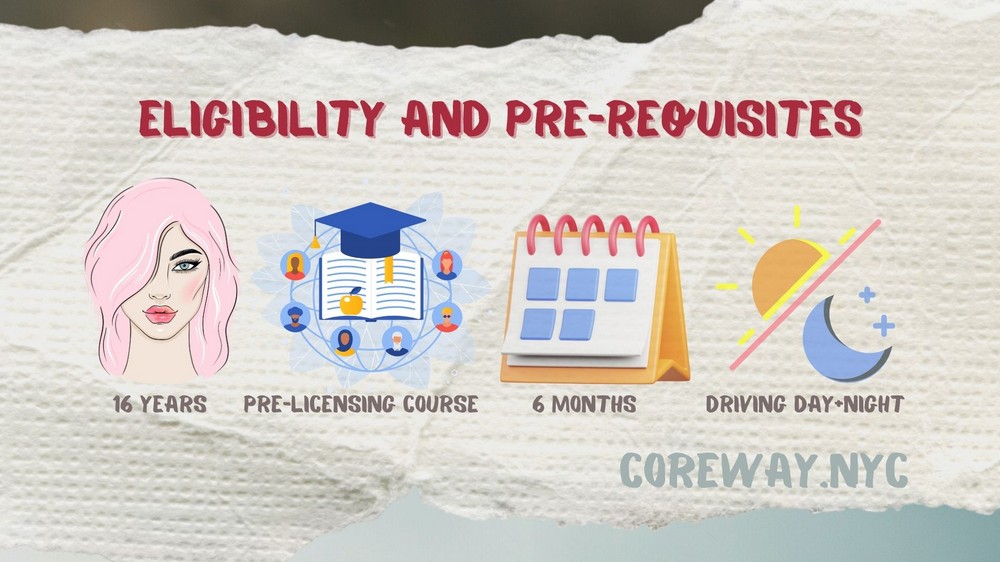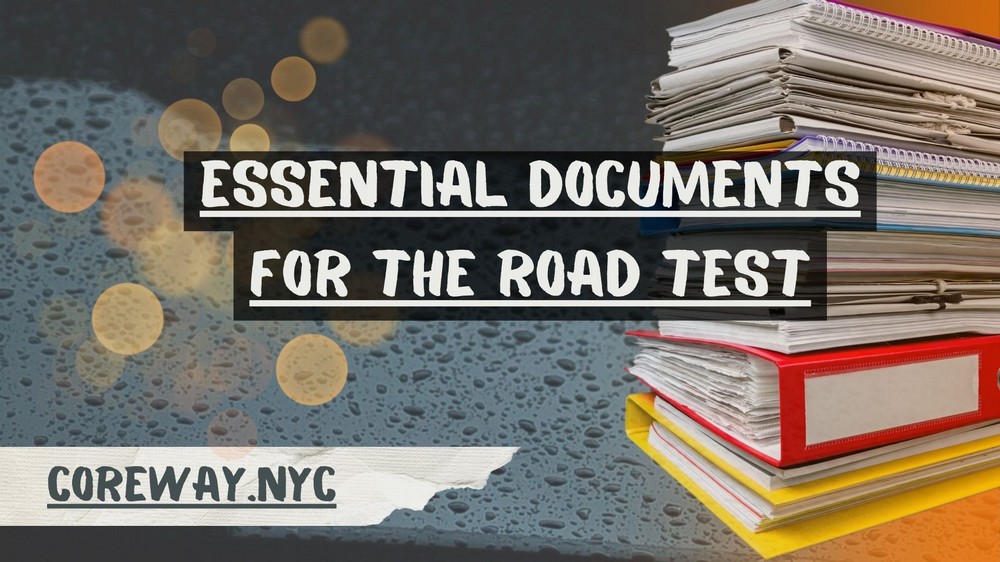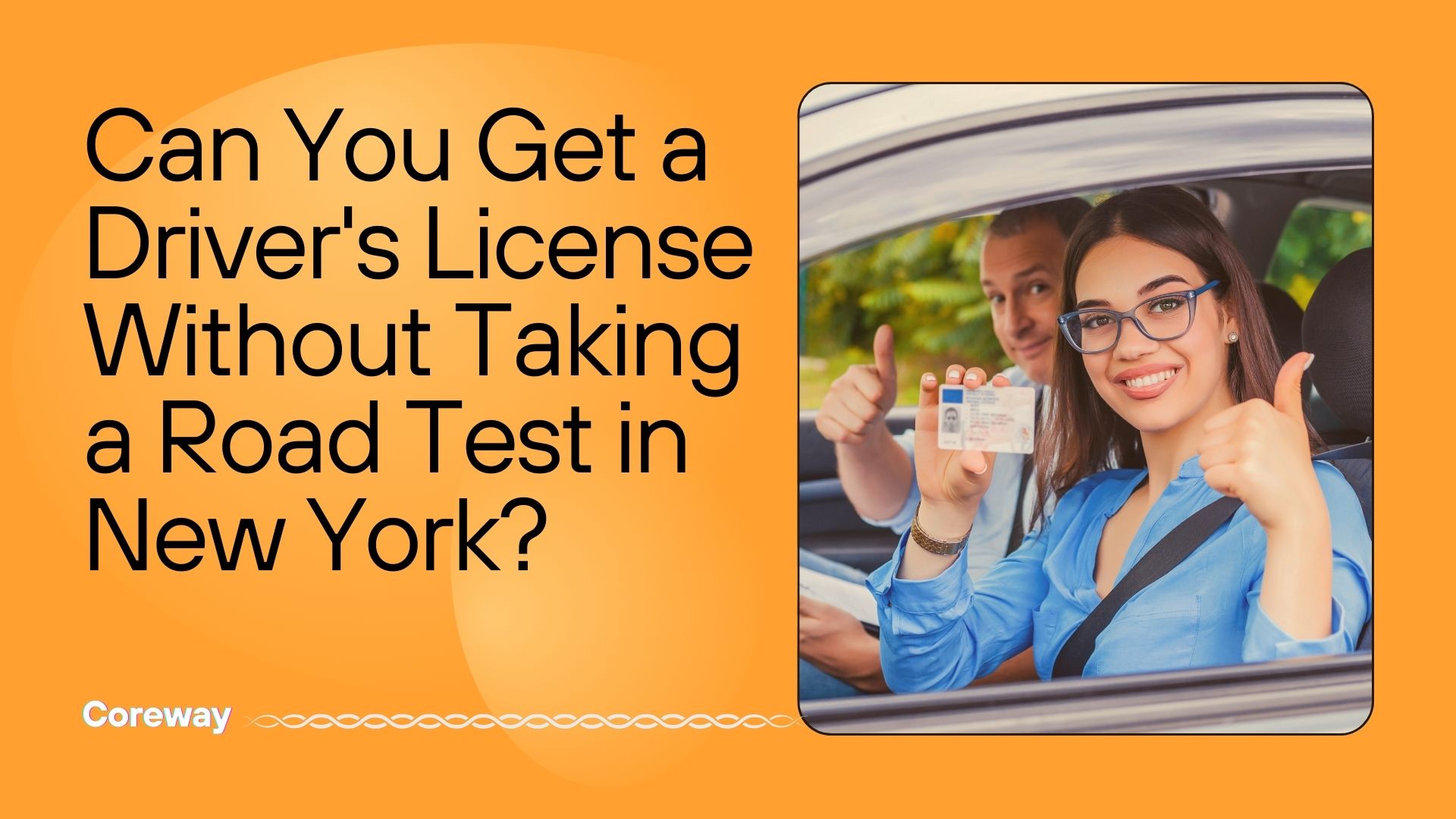

Getting your driver’s license is an exciting rite of passage. After months of practicing turns, parallel parking maneuvers, and highway merges, that coveted plastic card represents the freedom to cruise the open roads on your own adventures. However, before enjoying these solo drives, you must first ace the all-important New York State road test.
This comprehensive skills test ensures you have the essential abilities to navigate roads safely. Thorough preparation and practice are crucial for success. This guide will walk you through everything you need to know, from eligibility rules to common mistakes, to pass on your first try.

The New York State Department of Motor Vehicles (DMV) has firm requirements governing who qualifies to take the road test. Table 1 summarizes the key details:
Table 1. Minimum eligibility rules to take the New York State road test
Waiting Period with Learner's Permit
Driver's education program or pre-licensing course
Practice Driving Hours with Supervision (under 18)
50 hours, including 15 hours at night
Drivers must be at least 16 years old before scheduling an exam. The DMV mandates a waiting period of six months from the date when the applicant receives their learner’s permit. This rule provides under-18 drivers time to practice under supervision and demonstrate readiness through a road test.
During this period, completing an approved driver’s education program or pre-licensing course is compulsory. These classes cover road rules and safe driving methods to establish a baseline of knowledge.
For teenage applicants, New York specifies minimum practice driving hours before qualifying for the test, as shown in Table 1. An official MV-262 Certificate of Supervised Driving form signed by the supervising driver must verify meeting these hour thresholds.
With the groundwork laid through supervised practice, pre-licensing education, and months using a learner’s permit, you can schedule the pivotal road test.
You can schedule your road test either:
When reserving your test online, first create an account on the DMV website. Have your license or learner’s permit number handy for ID verification. The site shows available testing slots at nearby locations over the coming two months.
Select your preferred test center, date, and time. The DMV immediately confirms bookings, displaying your test details on the webpage and emailing a reminder.
You can also schedule road exams in-person up to eight weeks out if slots remain open. Visit a DMV office with an acceptable ID and know your top preferred test date range beforehand.
After you book the road test, immediately add the confirmed date and start time into your calendar. Double check to avoid any scheduling mishaps!
New York has numerous road test sites spanning its vast expanse from Montauk to Niagara. When scheduling your exam, consider location based on:
Refer to the DMV road test locations page detailing all 27 test sites statewide. This map helps weigh options based on visibility into available tests and drives.
With your exam scheduled, it is time to prepare the essential documentation.

Arriving fully prepared with correct paperwork prevents unnecessary delays or cancellations on test day. Be sure to bring all items in this road test documentation checklist:
Table 2. Required documents to provide at the road test
Original permit card (no photocopies)
Form MV-44 completed and signed
Proof of insurance
FS-25 form or insurance ID card
Up-to-date papers for car used in test
Vision test report
If applicable based on age and permit type
You must produce your valid learner’s permit, rather than just quoting the number. Photocopies are not accepted. Bring the completed license application signed by your parent or guardian if under 18.
The DMV reviews current proof of insurance and car registration matching the vehicle make/model. Review expiration dates beforehand. Also, fetch any necessary vision test reports if your age and permit type required one.
With paperwork ready, ensure your test car meets regulations too.
The car or light truck brought for the road test must meet these baseline safety standards:
Essentially, the test vehicle should be fully functional and roadworthy to ensure a smooth exam. Issues like worn tires, expired registration, or busted tail lights can prompt cancellations. Conduct a thorough pre-test inspection to catch any deficiencies needing repair beforehand.
With a registered, insured vehicle that passes safety checks, shift focus towards honing your driving skills next.
The road test assesses proficiency across core abilities like:
Practice sessions should emphasize these skills essential for public roads.
Table 3 outlines the key competencies and preparation recommendations.
Master judging car distances from the curb. Aim for a smooth single motion backwards.
Reversing in straight line
Use all mirrors with head checks before reversing more than a car length
Slow with full stops. Check all directions before turning the wheel
Left and right turns
Use turn signals every time. Stay in the correct lane position before & after
Traffic light stops
Halt before stop lines/crosswalks. No creeping after red lights
Always yield to pedestrians at crossings. Allow other vehicles to merge
Schedule practice drives during both daylight and nighttime to experience illumination variances. Begin practicing these techniques early, logging extra hours for any struggles. Consistent rehearsal builds muscle memory for instinctively demonstrating safe road habits.
Beyond driving practice, also:
These well-rounded preparation activities build overall road readiness for responding correctly during the spotlight of your real test.
Despite thorough preparation, nerves sometimes override road skills during tense testing sessions. Monitoring for frequent slip-ups can help consciously prevent them.
Table 4 shows typical mistakes leading to instant test failures:
How to Prevent It
Failing to yield right-of-way
Practice scanning and interpreting intersections thoroughly
Ignoring traffic signs or signals
Quiz yourself on spotting and obeying all signs
Improper turns or lane changes
Perfect mirror checks, signals, positioning each time
Exceeding speed limits
Consciously monitor speedometer to avoid creeping up
Late or missed braking
Scan farther ahead to react promptly
Pay special attention to these common pitfalls during practice drives. Discuss any persistent struggles with your supervising driver for extra coaching.
Staying calm and avoiding rushing also minimizes blunders. Play relaxing music and take deep breaths to maintain composure if anxiety spikes.
Obtaining your New York State driver’s license via a passing road test score opens exciting possibilities. Ensure you set yourself up for first-try triumph through diligent preparation.
Follow all the pre-requisites for supervised practice driving and pre-licensing education. Book your test at a convenient location with an optimal appointment. Gather essential documents and conduct a thorough vehicle inspection beforehand.
Most importantly, dedicate time to rehearsing core driving skills reflectively. Seek feedback from supervisors to correct any lingering bad habits. Avoid common mistakes like ignoring signs or improper turns using conscious effort.
With this comprehensive guide’s advice, your road test finish line is now clearly marked for victory. Soon you will confidently cruise towards new adventures with that hard-earned license in hand. Bon voyage!
Please share your own preparation tips and experiences in the comments to encourage fellow new drivers.
New York State has implemented a Graduated Driver License (GDL) Law to ensure the safety of young drivers as they gain experience on the road. This comprehensive guide will walk you through the process of obtaining a junior driver's license in New York, including the requirements, restrictions, and important safety considerations.
New York has specific requirements for road tests, including necessary documents, vehicle conditions, and personal items. Understanding these requirements is essential for a smooth testing experience.
Are you passionate about driving and eager to share your knowledge with others? Becoming a driving instructor can be a rewarding career choice that allows you to teach new drivers the essential skills they need to navigate the roads safely.
Getting your driver's license is an exciting milestone that offers the freedom to travel independently. However, the process of obtaining a license involves several important steps, including passing a road test. Many people wonder, "Can I get my driver's license without taking a road test in New York?"

Getting your driver's license is an exciting milestone that offers the freedom to travel independently. However, the process of obtaining a license involves several important steps, including passing a road test. Many people wonder, "Can I get my driver's license without taking a road test in New York?"

Driving is a privilege, not a right, and it's essential to maintain a valid driver's license to legally operate a vehicle in New York City. However, various reasons, such as traffic violations, driving under the influence, or failing to maintain proper insurance, can lead to a suspended license. If you find yourself in this situation, it's crucial to understand the steps required to reinstate your driving privileges and get back on the road legally.

Antony is a seasoned professional in the realm of driving education, having honed his expertise on the bustling streets of New York. A former driving instructor, John not only brings a wealth of practical driving experience but also an in-depth understanding of traffic laws and safety protocols.
Coreway LLC is a modern and fast driving school service. With a handy app, you can start driving in your desired location in just 1 day, get an online appoinment and book a car for a road test. Everything you need to get your driver's license in one place.
At CoreWay LLC, our mission is to create safer roads by training drivers to be confident, responsible, and aware. We focus on delivering high-quality education that ensures every student feels secure and prepared when they get behind the wheel. Our programs are designed to equip you with the necessary skills for safe driving, making the roads safer for everyone.